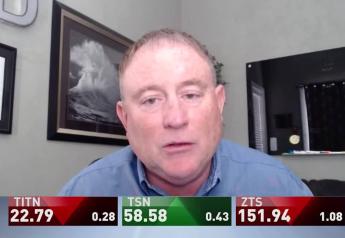Match Farm's Agronomy Decisions to Weather Challenges this Planting Season
Weathering 2021 After the Storm 031821
Wild weather doesn't just impact one year, often the effects can linger for seasons to come.
For Nevada, Iowa, farmer Scott Henry, the winds from last year's derecho still echo in his mind.
"I actually was in my pickup at the time, and so I watched corn be flattened before my eyes," said Henry.
He knew the impacts were significant.
"We came out after it was all over to find a 200,000-bushel grain bin collapsed like a tin can, support structures on the grain facility leaning over into other bins and of course the crop damage alone was disheartening," said Henry.
The crop damage meant a long difficult harvest, and now he expects challenges with planting and a season-long fight against volunteer corn.
"We're going to pull some corn-on-corn acres out and go back to beans on them," he explained, noting that as one strategy to deal with the unwanted corn plants.
"Every time we get a wet spell, we're going to see more of this volunteer corn come on," said Farm Journal Field Agronomist Ken Ferrie. "So, you need to plan for multiple passes of volunteer corn control out there."
Ferrie says managing 200-bushel worth of volunteer corn in some places won't be an easy task, but it’s important. Volunteer plants can be a conduit to rootworm and disease issues in the future.
Mark Licht, an Iowa State University Extension cropping system specialist says make sure you know what specifically was planted last year.
"Know what traits we had in the corn hybrids last year because those are the herbicide traits that we're going to be dealing with in the volunteer corn," said Licht.
The derecho hasn't been the only weather-related challenge in the last few years. Recent flooding in Kentucky and high water following last year's hurricanes bring their own planting challenges.
"After a year of flooding, depending on when the flooding took place, how long the soil was saturated and whether you grew a crop or not, could dictate whether you'll deal with what's called fallow syndrome," said Ferrie.
The syndrome contributes to a lack of oxygen that can harm microbes and rob a field of fertility for a period of time. Eventually, microbial activity and oxygen will return, but Ferrie recommends letting soils warm up before planting and paying close attention to plant health early in the season.
"The big thing is to put some phosphate on with the planter while locating that starter fertilizer close to the plant," said Ferrie. "The fallow syndrome will take place, but the starter fertilizer band will kick that corn down the road until we finally build this microbial population back to where it belongs."
From too much water to too little are common extremes across the country, with the latter a major concern for farmers preparing to plant this season. Drought and dryness now stretch across large portions of the country. Agronomists say that needs to be considered at planting.
"If we're really dry in the top 2 inches of the soil, then we'll want to time things there a little bit to help us get that corn out of the ground," said Licht. "We might even plant a little bit deeper and try to plant into the moisture."
Jonathan Kleinjan is an Extension agronomist at South Dakota State University. He says don't cut back on inputs just because you think it’s going to be a drought year.
"If you plan for disaster, that's what you're going to get," said Kleinjan. "A drought can all be over in one day and so the only thing I would suggest is maybe don't put extra fertilizer on. I wouldn't recommend cutting back on seed populations."
Agronomists recommend terminating cover crops early, so they aren't transpiring what little moisture is available and if possible, leave more residue on the ground's surface.
"A lot of our herbicides are degraded by soil microbes, and they need moisture to do that," said Ferrie. "In a dry year, you shut down the microbial process which shuts down the degradation of the herbicide."
For that reason, Ferrie says it’s important to review cropping restrictions on herbicides from last year. Most of all, he recommends producers be mindful of moisture.
"We always plant into moisture especially with corn," said Ferrie. "Don't plant in the dust and try to rain it up if there isn't enough moisture. If you can't get deep enough to find moisture, then wait."







